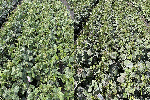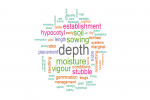Longtime National Variety Trials (NVT) host Gary Lang has been hosting the NVT on his farm near Wickepin, in south-west Western Australia, since the program began.
Gary, who took over as chair of the GRDC Western Panel last September, was a grain producer for 42 years, hosting research trials, including the NVT, for 20 years.
After retiring last year, he and his wife Sue leased out the farm, ‘Wyoming’, that has been in the family since 1923, except for a 10-hectare portion that they allocated to the Facey Group for trials.
A past president and life member of the grower group, Gary says they were keen to see Facey Group continue the NVT and other research trials at the farm.
During Gary and Sue’s time at ‘Wyoming’, the NVT included wheat, barley and canola lines, which provided a valuable guide to potential varieties for the future.
“I always tried to have the latest varieties, and that’s always seemed like a bit of a free kick to have the highest-yielding variety you could,” he says. “So I was keen from the business level. And other than that, my motivation was because it was such a big part of the Facey Group.”
Gary says it is important for growers to have access to local, independent data that does not “cherry pick” from only the best results. “Every variety we’ve adopted, we’ve identified it through the NVT,” he says.
Among the standouts has been HyTTec® Trident, a triazine-tolerant canola that was outyielding ATR Bonito in trials by 25 to 30 per cent.
“That was a huge motivation to replace ATR Bonito and we got a huge kick in yield out of that,” he says.
We got all of the 25 per cent increase in yield. You multiply that over – I think we did 600 hectares the first year we did it – and that’s a lot of money.
Immense advantage
Despite experiencing their worst season ever in 2024 due to extreme dry weather and a run of severe frost events, South Australian grower Robert Pocock says the NVT barley plots at his farm in the Mallee performed exceptionally.
Sown dry into faba bean stubble in mid-May, the crop had less than 90 millimetres of growing season rainfall. Despite this, in the lead-up to harvest Robert was anticipating “exceptional” yields: “I’d have been happy if my barley looked like the NVT crop in 2024.”
The family began hosting trials at Lampata more than 50 years ago, when Robert’s grandfather Bob was at the helm. As well as barley, they have also occasionally hosted lupin trials.
Robert says hosting trials does not complicate on-farm operations yet the advantages are immense.
“We always liked seeing what’s happening with new varieties that are getting tested,” he says. “I generally will only look at changing a variety if it’s gone through the NVT.
“If they’re on your own patch, there’s nothing better than that to have a look ... and you get good access to the people who are at the forefront, on the ground, and they’re usually quite happy to share what’s happening.”
Robert says one of the major benefits has come from pitting varieties against each other in similar circumstances.
“It’s all in the notes, but seeing it is better, because quite often we have groups of farmers come out to have a look and it’s always good to hear what they think.”
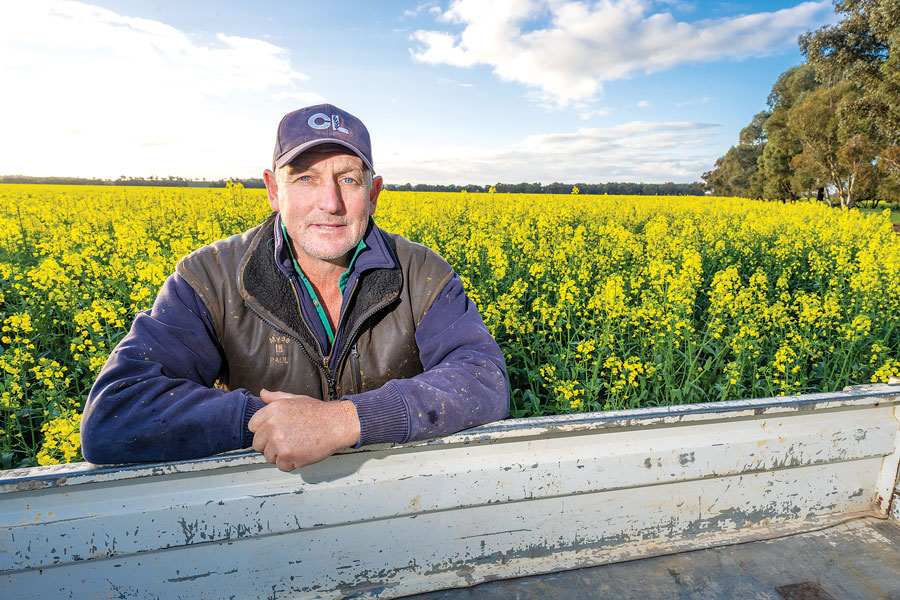
Paul Tognetti has hosted the NVT for more than a decade. The site also servers as a focal point for Delta Ag’s annual field day, bringing growers and agronomists together. Photo: Nicole Baxter
Knowledge bank
With a rotation based on wheat and canola for the past 25 years, New South Wales grower Paul Tognetti is particular about the traits he wants to see in new canola varieties: increased yield, better blackleg resistance and stalk strength.
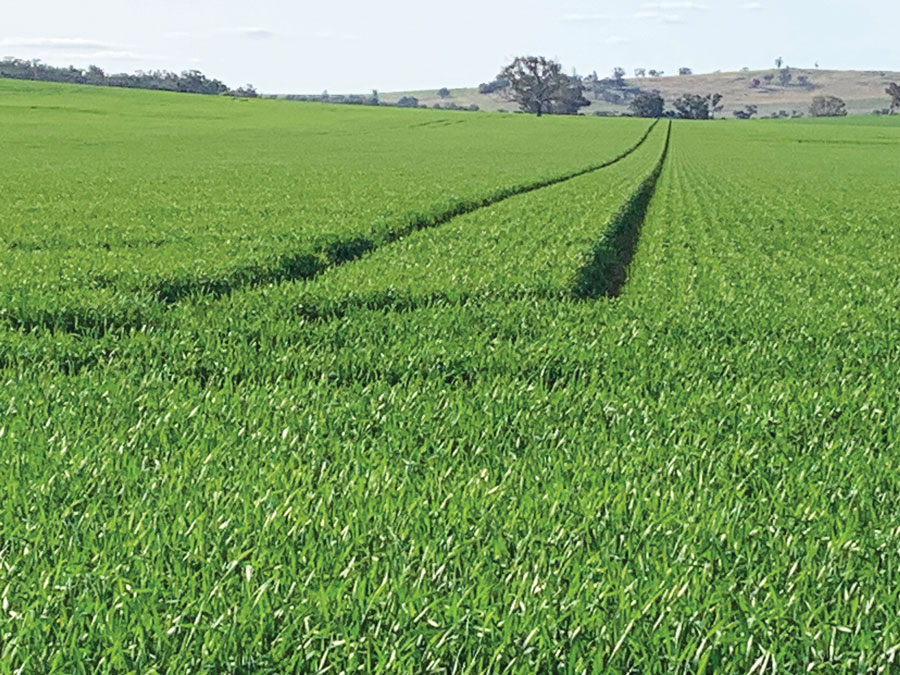 Wheat at ‘Myee’, near Grenfell, NSW, in August. Photo: supplied
Wheat at ‘Myee’, near Grenfell, NSW, in August. Photo: supplied
Paul has been hosting the NVT for more than a decade at ‘Myee’, the dryland property he manages near Grenfell, in central NSW.
“I was asked to go in, and thought it would be great for our district, and our business, to have that chance to see what different canola varieties do,” he says. “The other good thing is we have a field day each year with Delta Ag.
“It brings our grower group together, socially and agronomically, to look at it. Our local agronomists also get involved and often the reps from Nuseed and Pioneer attend, so it’s a good get together ... we learn a bit and have a look at the different varieties.”
Further west, Jeff Muirhead has had an NVT site assessing barley, bread and durum wheat, and oat varieties on his property near Merriwagga for the past seven years.
Jeff trusts the independent data and chooses which varieties to grow based on how they perform locally over a period of three or four years. While yield is important, other factors such as demonstrated resistance to disease are also highly valued, he says.
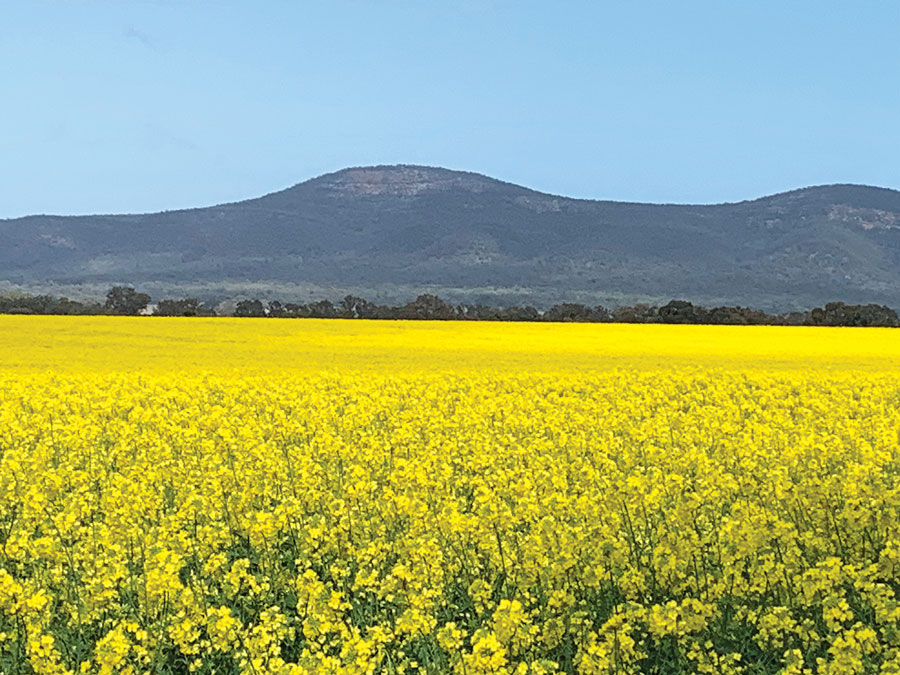
Canola in flower at ‘Myee’, near Grenfell, NSW, in September. Photo: supplied































